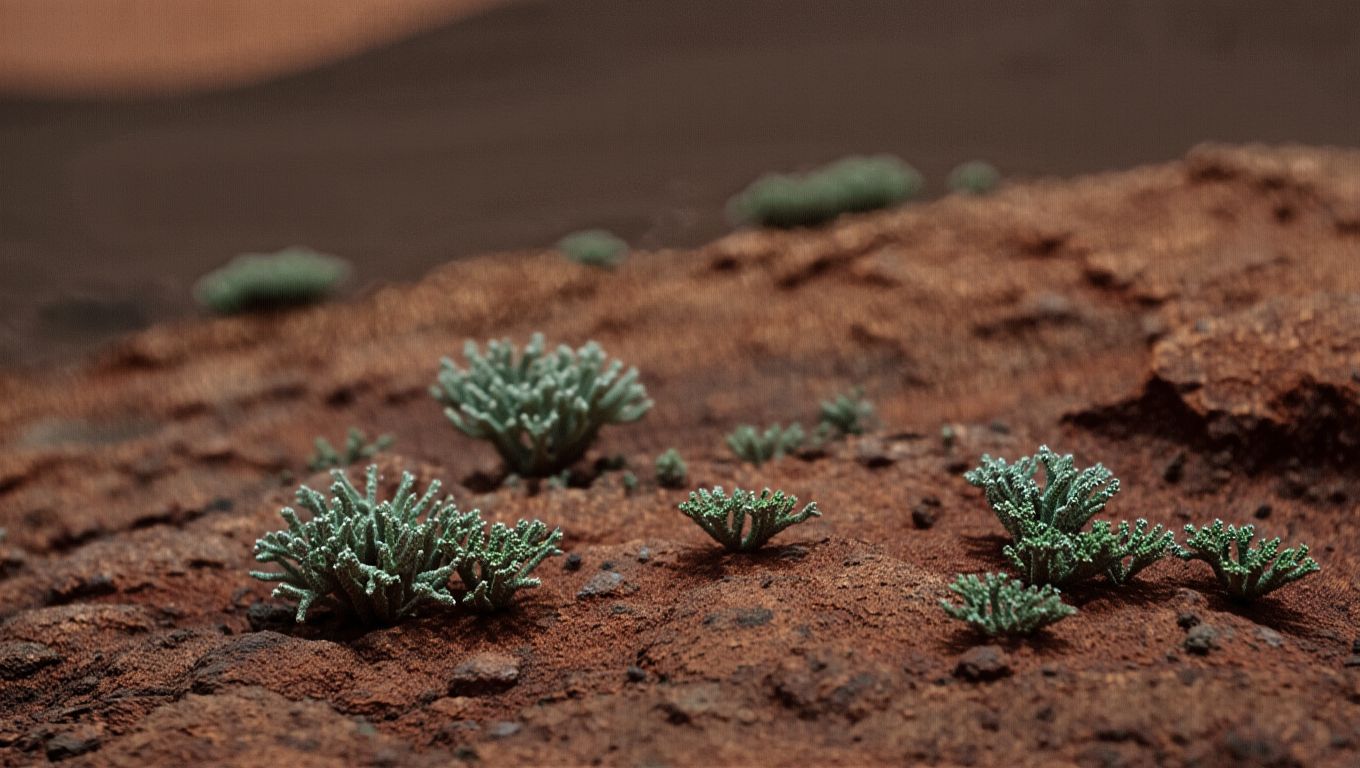Lichens survive Martian conditions: was life possible on Mars? 🌱
Follow us on Google News (click on ☆)
Lichens, these symbiotic organisms between a fungus and an alga or cyanobacterium, are known for their extreme resilience. A study published in IMA Fungus reveals that certain species maintain their metabolic activity under an environment simulating that of Mars, including ionizing radiation comparable to that of the Red Planet.

Two species of lichens, Diploschistes muscorum and Cetraria aculeata, were exposed for five hours to Martian conditions. Researchers simulated Mars' atmospheric composition, pressure, temperature variations, and radiation. Diploschistes muscorum performed particularly well, contrary to expectations about the limits of life in the face of radiation.
This study is the first to show that the fungal partner of lichens can remain metabolically active in a simulated Martian environment. The lichens' defense mechanisms against ionizing radiation could shed light on research into Mars' habitability and the resilience of terrestrial organisms.
The results suggest that ionizing radiation, though formidable, does not constitute an insurmountable barrier for certain forms of life. Lichens could thus play a key role in future space exploration missions, particularly in testing the possibility of colonizing Mars.
Researchers now recommend long-term studies to assess the impact of chronic radiation exposure on lichens. These studies could also include in situ experiments on Mars to confirm these promising results.
The research team, led by Kaja Skubała, emphasizes the importance of these findings for astrobiology. Lichens might not only survive on Mars but also help us understand how life adapts to extreme environments, both on Earth and elsewhere in the universe.
How do lichens survive radiation?
Lichens possess protective mechanisms against radiation, including the production of pigments that absorb harmful rays. These pigments, such as melanin in fungi, protect DNA from damage caused by ionizing radiation.
Moreover, the symbiosis between the fungus and the alga or cyanobacterium enhances their resilience. The fungus provides shelter against extreme conditions, while the alga or cyanobacterium produces nutrients through photosynthesis, even in low light.
This collaboration allows lichens to repair cellular damage more effectively than isolated organisms. Their ability to enter dormancy during unfavorable conditions and reactivate later is also an asset for surviving hostile environments like Mars.
Why is Mars prone to radiation?
Mars lacks a global magnetic field like Earth's, which protects us from charged particles in the solar wind. Without this shield, the Martian surface is bombarded by cosmic rays and solar radiation.
Mars' thin atmosphere also offers little protection against this radiation. Unlike Earth, where the dense atmosphere absorbs and scatters much of the harmful rays, Mars' atmosphere is too thin to perform this role effectively.
Solar storms and flares further increase radiation levels on Mars' surface. These events can cause radiation spikes that pose a major challenge for the survival of living organisms, as demonstrated by the lichen experiments.